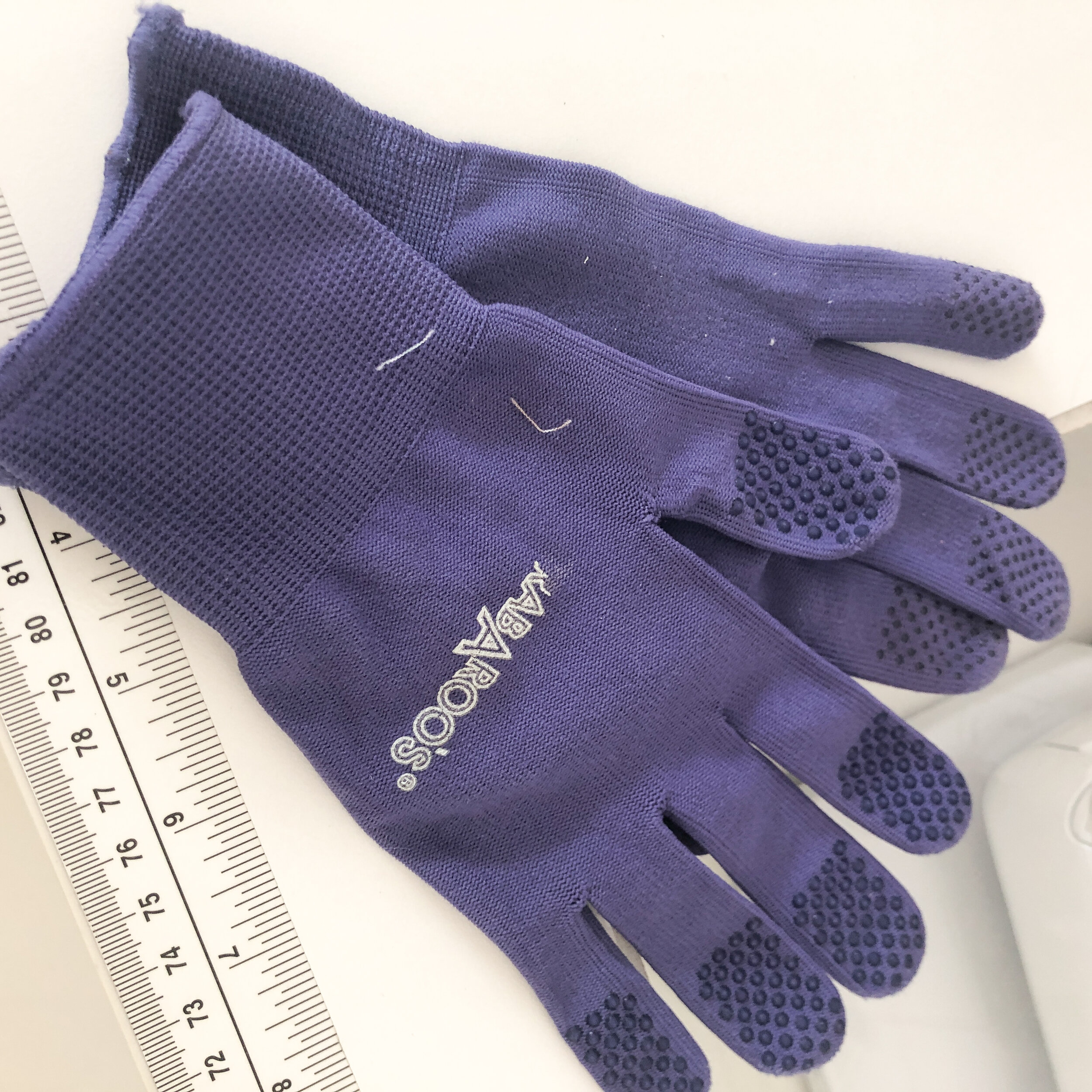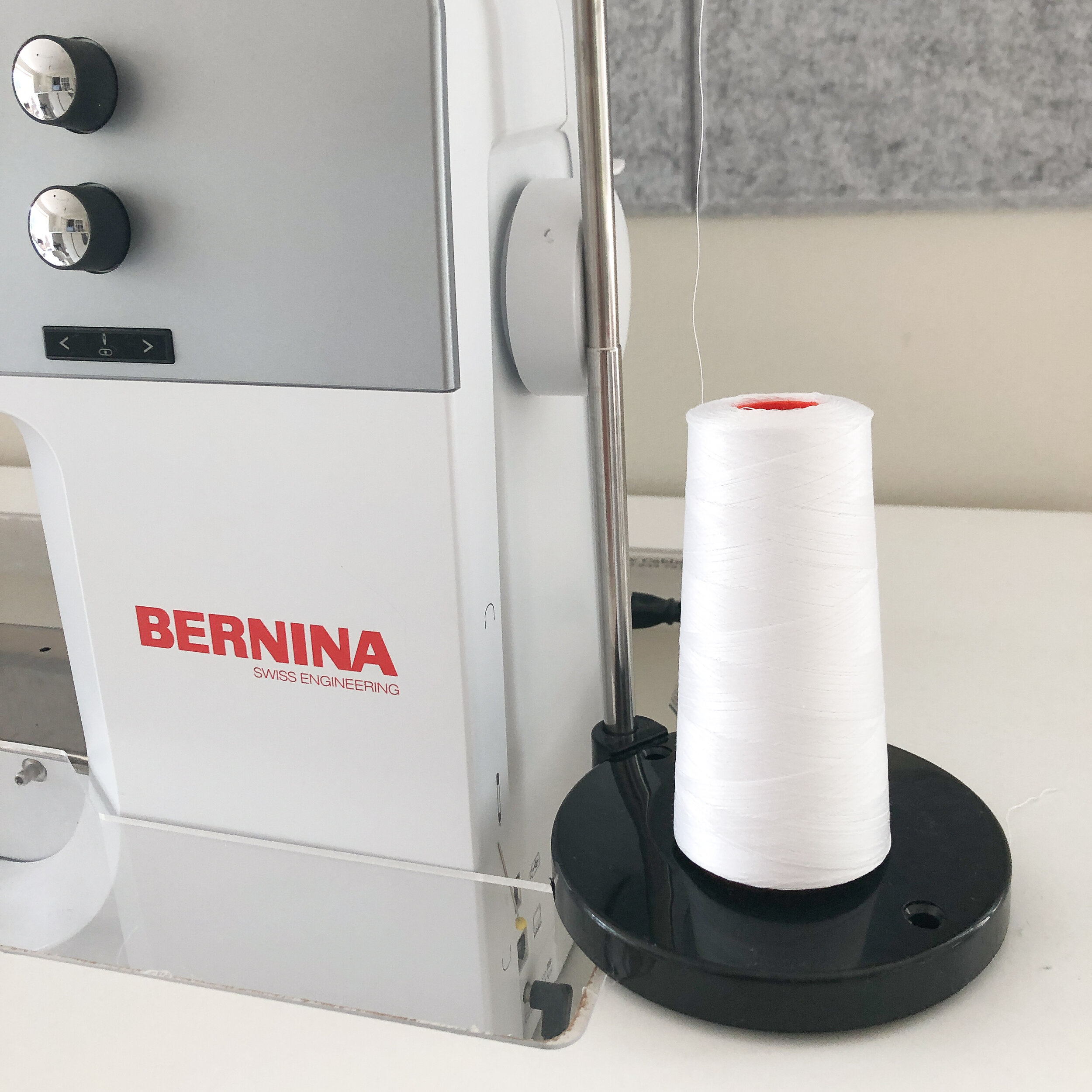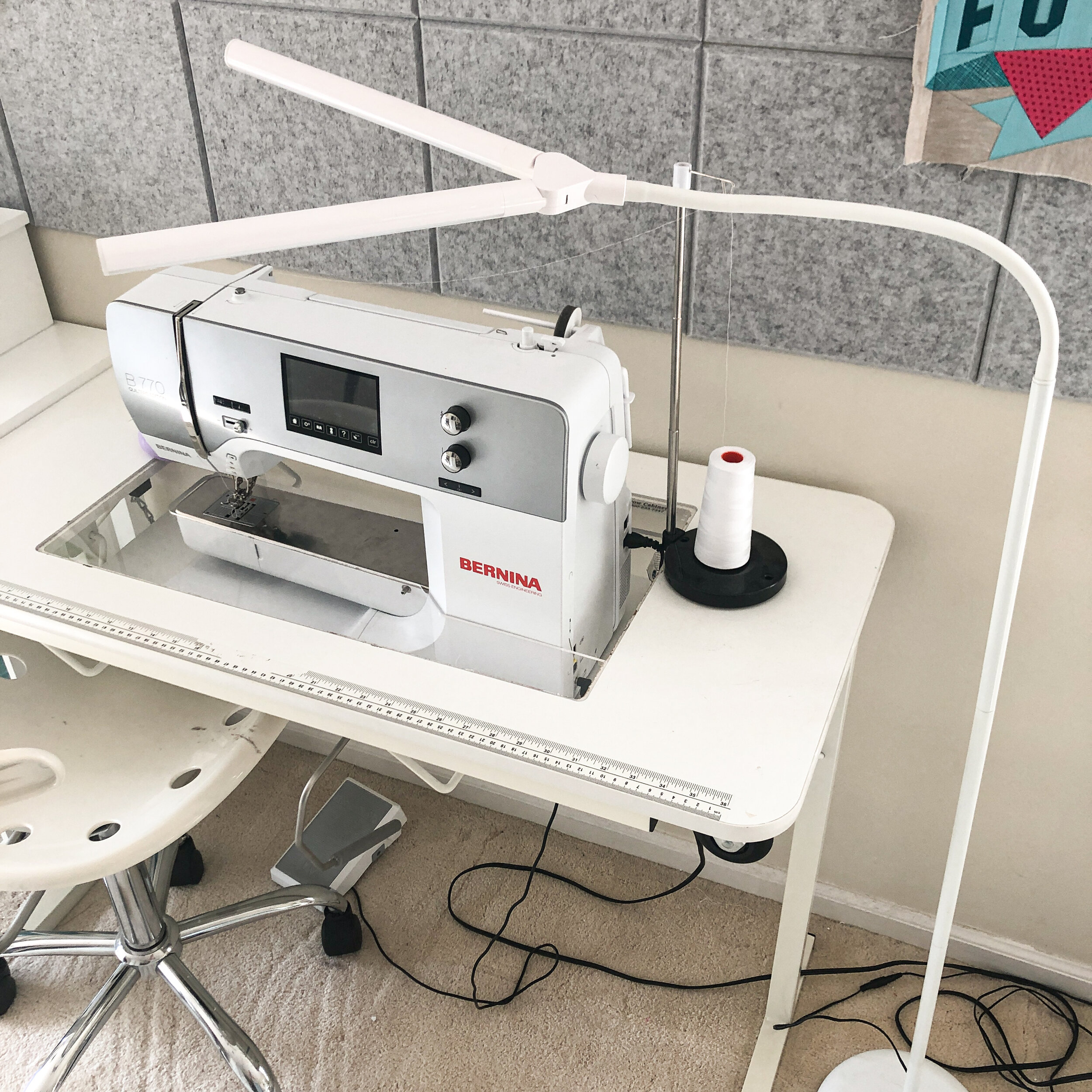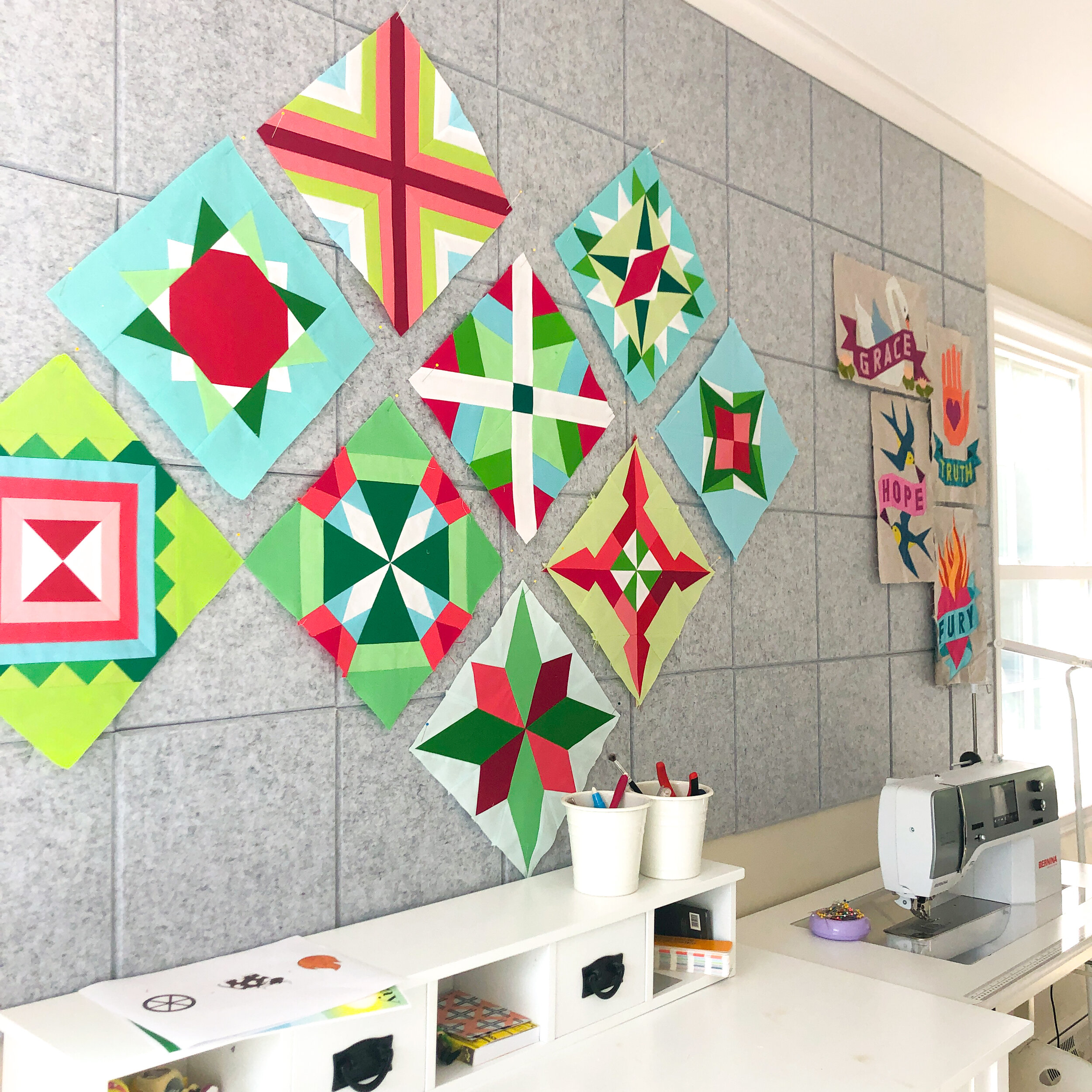My quilting studio must-haves—here’s what you really need (and what you don’t!)
This post is part of my Quilting 101 series! See more of my Quilting 101 posts here
If you’re just getting started in quilting, it can be overwhelming to figure out what supplies you actually need. Here’s my guide to the quilting essentials that I have and use daily in my own studio, with a few words about why each of these are my tried-and-true favorites. I’ll talk about where you might want to consider investing in higher-priced items and where you can save a few bucks on off-brand products … plus I’ll tell you what you probably don’t need!
Keep reading for my detailed recommendations, or visit my Amazon Storefront for a collection of all of the links below. (Some links below are affiliate links.)
QUILTING TOOLS
Olfa Rotary Cutter (click here to purchase)
Well of course this had to be #1 on my list. 😂 Hopefully you have one of these already. If you don’t, you’re probably just starting your quilting journey—and if you’re only buying one tool, this is the one!
My favorite size and brand is this Olfa 45mm, but I have several other sizes as well. I personally do not love ergonomic rotary cutters like this one, but some people swear by them. Personal preference is key, so try a few different sizes/types to see what you like!
Somolux Rotary Cutter Blades (click here to purchase)
Change your blade early and often! Off-brand rotary cutter blades are soooo much cheaper, but the quality/sharpness can be hit-or-miss. Lately I've been buying these Somolux brand blades—they have always been great!
Rulers
Creative Grids is my favorite brand of rulers by far, because they have textured spots that grip the fabric better IMO. They're a bit more expensive, but worth the investment, so I’ve slowly been replacing my entire ruler collection with Creative Grids, one ruler at a time. (I do not have any brand endorsement deals with Creative Grids—I just like their rulers!)
Regardless of what brand you choose, what ruler sizes do you really need? Every quilter might have a different answer to that question, but personally I used my 6.5" x 24.5" and 3.5" x 12.5" the most. Plus of course you’ll want at least one or two square rulers.
Here’s a list of common ruler sizes to get you started:
• 6.5" x 24.5"
• 14.5" square
• 3.5" x 12.5"
• 6.5" square
• 4.5" square
• A set of square sizes
Self-healing cutting mat (click to purchase)
When it comes to cutting mats, size does matter! 😂 I highly recommend buying the largest size cutting mat you have room for—you will thank me later when you’re trying to cut up yardage. I have and use this 24” x 36” mat. Color doesn’t matter too much, but I sure do love my white cutting mat for taking photos, and just for how nice it looks in my studio! In fact, the white mat has actually been my most-asked-about/requested quilting tool on social media.
Other fabric cutting tools
If you’ve been in the quilting world for a minute, you’ve probably seen your fair share of fabric cutting gadgets. I’ve tried many of them, and I’m here to tell you: Keep it simple. Almost every cutting tool I’ve purchased over the years (aside from those listed above) has gone unused in the long haul. This especially applies to die cutters, which I found to be expensive, bulky, impractical, and in many cases less reliable than careful rotary cutting.
A rotary cutter, rotary blades, and some carefully chosen rulers: In the end, that’s really all you need to successfully cut fabric.
Ruler rack (click to purchase)
In spite of what I said above, having a ruler that is the right size for a particular project will make your life easier. So if you stick with quilting, you will likely amass quite a collection of them! This ruler rack sits on my cutting table, keeping them all organized and close at hand. If you don’t have space for a table-top ruler rack, a wall-mounted rack like this is another great option.
Clover Wonder Clips (click to purchase)
These work particularly well for holding binding onto a quilt before you stitch it down, but they have many other uses as well. I linked the "real" Clover brand above, but you can also buy off-brand versions for much cheaper right here. (I haven't purchased these, so I can't vouch for the quality, but the Amazon reviews are solid.)
Grabaroos quilting gloves (click to purchase)
I literally cannot quilt without these gloves, whether free-motion or straight lines. They just help me grip the quilt so much better. I even use them when I'm binding. I love this brand because they're made of a super thin material and have the grippy texture on the fingers.
NOTIONS
Aurifil White Thread Cone (click to purchase)
I almost never use any thread color other than white or maybe light gray. So a cone is much more economical than buying lots of smaller spools. Aurifil 50wt cotton thread has always been my preferred brand/type for its relative lack of lint, but the smaller Aurifil spools don’t work as well with Bernina machines. So the cone solves that problem for me as well.
Thread Cone Holder (click to purchase)
If you're going to use a thread cone, you'll need a cone holder! This is the one I have—it works great with my Bernina, and probably most other machine brands as well.
PRESSING
Reliable Velocity Iron (click to purchase)
You guys. The iron struggle is real! I went through at least four brands, including a very expensive Rowenta, before I got my Reliable. The Rowenta leaked almost immediately! But then I got this Reliable Velocity iron, and for me, it has become the gold standard of ironing. (I do not have any relationship with Reliable—I just use and like their irons!). At $200, it’s not a cheap date, but considering how much quilters use their irons, this is an area where I recommend investing in quality. The one linked above is a newer version than what I have, but Amazon reviews look to be similarly good. (Updated to add: I’ve now had this iron for 10 years and still have not had a single problem with it!)
Brabantia Ironing Board (click to purchase)
I sewed for years on a cheap, narrow, wobbly ironing board before I finally got fed up and bought this one. Why didn't I do it a long time ago? Yes, this board is expensive compared to some, but I love love love how wide it is and how very steady it is. Again, when you think about how often quilters press things, it really makes sense to invest in a quality ironing set-up.
Wool pressing mat (click to purchase)
I was getting some shiny spots when I was pressing bulky seams, so I decided to try a wool pressing mat to see if that resolved the issue. It did! I love this mat! (Just be aware that if you prefer to press with steam, a wool pressing mat is prone to getting damp and smelly.)
Spray starch (click to purchase)
I’m a recent convert to spray starch when piecing and pressing and truly cannot quilt without it anymore! Good old Niagara Spray Starch is my hands down favorite for starching while I’m piecing. I use it until the fabric is crispy. Lol.
FURNITURE AND DECOR
Arrow Gidget 2 Sewing Table (click to purchase)
My machine is a Bernina 770QE, set up on an Arrow Gidget 2 sewing table outfitted with a clear plexiglass custom insert for the drop-in area (see below for link to the insert). The Gidget 2 is super steady and includes a very heavy-duty lift mechanism that allows even the heaviest of home sewing machines to drop down in. And yet the table is very compact, and even folds up and rolls away if needed, making it a perfect choice for smaller sewing spaces. I can’t recommend this table enough, especially after spending years sewing on our dining room table!
Custom clear plexiglass insert for Gidget 2 Table (click to purchase)
This is what will make the Gidget 2 perfectly fit almost any machine! You enter the make and model of your machine, and they'll cut the insert to fit your set-up, giving you a seamless sewing surface that's level with the bed of your machine. If you’re even remotely serious about quilting, trust me, you will want this. It’s easy to order and an economical way to get a completely custom surface for your machine.
Daylight Company Duo Light (click to purchase)
I love these dual lights, because you can position one in front of your machine and one towards the back, giving you amazing light coverage. Eyestrain is real, y’all. I don't know how I sewed before I had this light!
Counter-height cutting tables (click to purchase)
My whole sewing space revolves around these counter-height cutting tables. This is where I cut fabric, collect fabric pulls for my next project, and generally pile things. 😂 And while I certainly wouldn’t say these are essential (obviously not everyone will have the space for them), they do make my life a whole lot easier! I bought my cutting tables (two of them, positioned end-to-end) many years ago and they are no longer available, but these tables from Amazon look to be very similar. I love the convenient storage cubbies on each end—I use one set of the cubbies for my scrap storage.
DESIGN WALL
A design wall is an amazing addition to any studio—it allows you to see what you’ve sewn so far, move blocks around, audition colors, and identify design problems so that you can adjust on the fly. Do you need a design wall to function as a quilter? Not at all. But will having one make you happy on a regular basis? Yes it will!
So if you have the space for a design wall, then what? Many quilters create design walls by just pinning up batting, a flannel sheet, or other similar “sticky” material, and this is a great solution for most. It’s cheap, it’s easy to install, and you can slap completed blocks up there with ease—they generally will stick the batting and not fall down. I had a homemade design wall myself for many years, made out of batting. But when I moved my studio to the first floor of my house, within viewing of the front door, I wanted a solution that would look a little nicer and not scare off my guests! Enter these felt acoustic tiles.
These tiles come in several colors, are relatively easy to install, look great, and can be cut to fit any space (I used my rotary cutter to trim mine to size along the window!). They basically turn your wall into a giant bulletin board. Unfortunately, quilt blocks will not stick to these tiles on their own—you will need to use pins to hold the blocks in place. My tiles are the "Silver Gray" color.
Double-sided tape for attaching the tiles to the wall
I used this tape to stick the felt tiles onto my wall. I tried several other methods of adhering the tiles to the wall, including mounting squares. This is the only thing that has (literally) held up. But I can't vouch for whether it will damage your walls, so use with caution—once you put them up, you may be committed!
FABRIC AND STORAGE
Billy Bookcases for fabric storage (click to purchase)
Billy Bookcases from Ikea are perfect for the way I store my fabric because they're shallow and inexpensive! I have 3 in my studio and my entire fabric stash lives in them. There are also doors you can buy for your Billy Bookcases which will protect your fabric collection from light-fading and dust. The shelves are height-adjustable.
Comic Book Boards for fabric shelving (click to purchase)
These are the key to great-looking fabric storage! I wrap most of my fabric (fat-quarter size and above) around these cardboard comic book boards and pin the fabric to secure it. Then I store the wrapped boards just like books in the bookcases. It's the perfect system to keep my fabric organized and VISIBLE—because when it comes to fabric selection and using your stash, knowing what you have is half the battle!
Robert Kaufman Kona Cotton Solids Color Card (click to purchase)
This is indispensable if you want to order solids online! Kaufman is my favorite brand of solids due to their huuuuuuge range of colors and ready availability. I always keep two of these color cards on hand: I cut up one card into little individual color chips—the chips are easier to compare to each other to make palettes. The other card stays whole (I find the un-chopped card is easier when you're searching for a certain shade).
Thanks for checking out my studio today! Happy quilting!
















